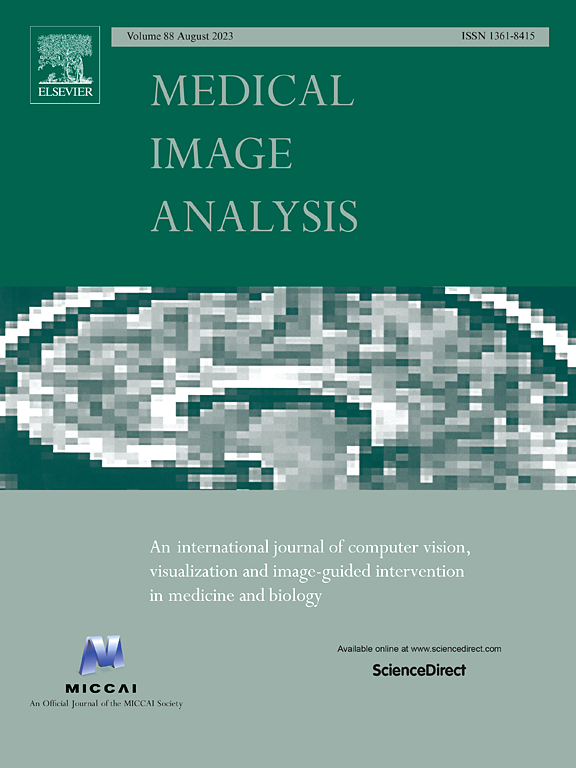MedIAnomaly: A comparative study of anomaly detection in medical images
IF 10.7
1区 医学
Q1 COMPUTER SCIENCE, ARTIFICIAL INTELLIGENCE
引用次数: 0
Abstract
Anomaly detection (AD) aims at detecting abnormal samples that deviate from the expected normal patterns. Generally, it can be trained merely on normal data, without a requirement for abnormal samples, and thereby plays an important role in rare disease recognition and health screening in the medical domain. Despite the emergence of numerous methods for medical AD, the lack of a fair and comprehensive evaluation causes ambiguous conclusions and hinders the development of this field. To address this problem, this paper builds a benchmark with unified comparison. Seven medical datasets with five image modalities, including chest X-rays, brain MRIs, retinal fundus images, dermatoscopic images, and histopathology images, are curated for extensive evaluation. Thirty typical AD methods, including reconstruction and self-supervised learning-based methods, are involved in comparison of image-level anomaly classification and pixel-level anomaly segmentation. Furthermore, for the first time, we systematically investigate the effect of key components in existing methods, revealing unresolved challenges and potential future directions. The datasets and code are available at https://github.com/caiyu6666/MedIAnomaly.
MedIAnomaly:医学图像异常检测的比较研究
异常检测(AD)的目的是检测偏离预期正常模式的异常样本。一般来说,它只需要正常数据就可以训练,不需要异常样本,因此在医学领域的罕见病识别和健康筛查中发挥着重要作用。尽管出现了许多治疗AD的方法,但由于缺乏公正和全面的评估,导致结论不明确,阻碍了该领域的发展。为了解决这一问题,本文建立了一个统一比较的基准。包括胸部x光片、脑核磁共振成像、视网膜眼底图像、皮肤镜图像和组织病理学图像在内的五种图像模式的七个医学数据集被策划用于广泛的评估。采用基于重建和基于自监督学习的30种典型的AD方法,对图像级异常分类和像素级异常分割进行了比较。此外,我们首次系统地研究了现有方法中关键成分的影响,揭示了尚未解决的挑战和潜在的未来方向。数据集和代码可在https://github.com/caiyu6666/MedIAnomaly上获得。
本文章由计算机程序翻译,如有差异,请以英文原文为准。
求助全文
约1分钟内获得全文
求助全文
来源期刊

Medical image analysis
工程技术-工程:生物医学
CiteScore
22.10
自引率
6.40%
发文量
309
审稿时长
6.6 months
期刊介绍:
Medical Image Analysis serves as a platform for sharing new research findings in the realm of medical and biological image analysis, with a focus on applications of computer vision, virtual reality, and robotics to biomedical imaging challenges. The journal prioritizes the publication of high-quality, original papers contributing to the fundamental science of processing, analyzing, and utilizing medical and biological images. It welcomes approaches utilizing biomedical image datasets across all spatial scales, from molecular/cellular imaging to tissue/organ imaging.
 求助内容:
求助内容: 应助结果提醒方式:
应助结果提醒方式:


